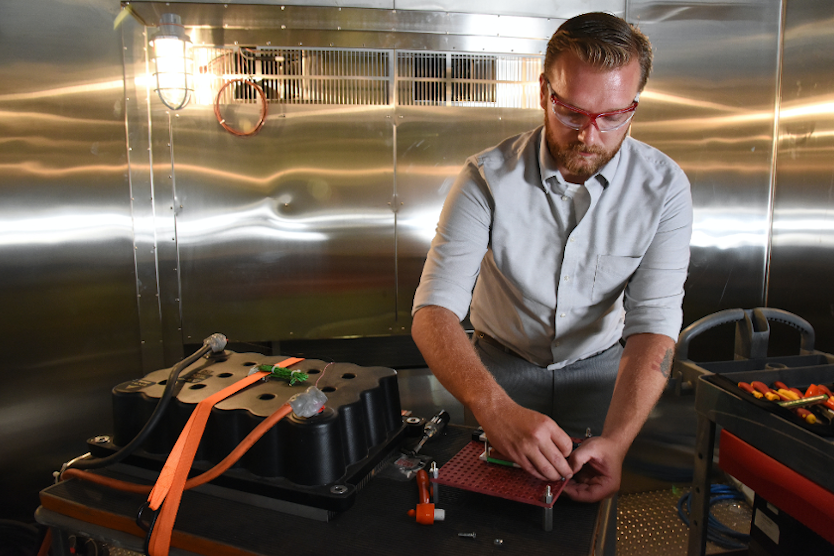
The University of Duisburg-Essen produced a high-performance alternative to graphite for the anode material of lithium-ion batteries.
© Unsplash
A high-performance alternative to graphite for the anode material of lithium-ion (li-ion) batteries has been produced by the University of Duisburg-Essen (UDE) and will lead to more powerful energy systems. The Federal Ministry for Economic Affairs and Energy (BMWi) awarded the project with EUR 1.7 million funding in September to develop the synthesis process in collaboration with the chemicals giant Evonik AG in order to transfer it to industry.
Traditionally, graphite has been used in the production of li-ion batteries but the possibilities for improving its storage capacity and charging speed have been exhausted. The new composite of carbon and silicon, which was synthesised in the laboratories at NanoEnergieTechnikZentrum (NETZ), UDE, has a much higher capacity to volume, can be charged more rapidly, and promises longer term stability.
"No project partner knows of anything comparable," says Prof. Hartmut Wiggers, UDE’s expert on gas phase synthesis of nanomaterials, in a press release. The composite easily provides the capacity of 1.5 Ah/g that meets industry requirements.
The optimal manufacturing methods have been explored at NETZ and the next step is to scale it up at a pilot plant, which Evonik is building. “Our first goal is to ensure the correct composition and shape of the particles at the industrial scale. This will allow us to offer our customers tailor-made solutions,” explains Dr Julia Lyubina, the project lead at Evonik.
In a second phase, the project will be split into two groups covering process design, particle characterisation and modelling, particle processing and additive printing methods for the anode material on copper foil. “HOSALIB - High-performance silicon-carbon composite as anode material for lithium-ion batteries” and will be funded by BMWi over three years with a total of EUR 2.3 million.


